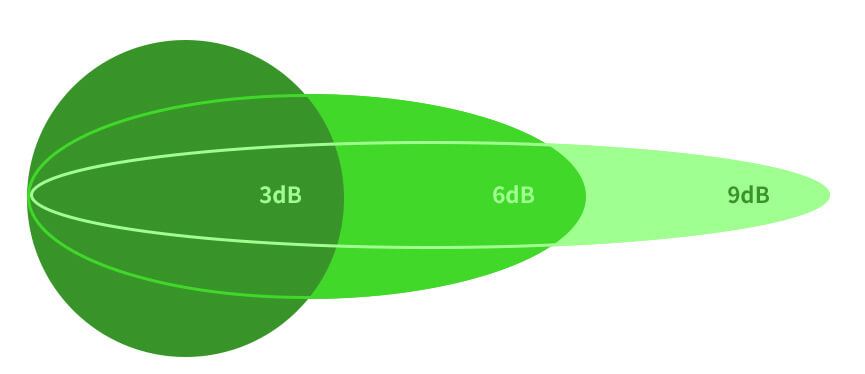Hi Community,
Hope everything goes well in your Helium network construction and HNT business. Today let’s talk about a crucial part of the Helium hotspot set-up which might impose a great effect on your hotspot’s performance and your HNT earnings, the antenna.
What do “gain” and “dbi” exactly mean?
Let’s start with the basic concept. “Gain” stands for the amount of power that an antenna can receive or send from a specific direction. Frequently we would say a device has again in power when the power exported from it exceeds the power imported to it. The “dbi” is the abbreviation of “decibels relative to isotropic”, which measures the gain of an antenna relative to an isotropic radiator at radio frequencies.
In plain language, “gain” indicates how strong the radio energy is and “dbi” is the way that the gain is measured.
How far can each dbi antenna reach?
Maximum range increases as the dbi increases. Here are the details of each dbi antenna that is commonly used.
Please note that all maximum range data is achievable under the ideal circumstance, which includes but is not limited to the use of powerful receivers, robust transmitters, and a clear line of sight between them.

Is a higher dbi antenna better?
Normally, 5 or 8 dbi antenna will satisfy most of the needs during Helium hotspots’ functioning, as they create a good balance between vertical beamwidth and radio signal gain. There exists an inverse relationship between these two, i.e., the vertical path will be narrowed as the signal gain of the antenna (dbi) increases.
An antenna with a very high gain will have a very low vertical path correspondingly. Take a beam of light as an example, where you concentrate the light at a very narrow-angle, it won’t provide as much visibility as possible above and below its path. If the vertical path of the antenna is too low, you may go beyond or below the transmitter you are planning to connect to.
If you have a complete sight of other helium hotspots, i.e., there’s no obstacle between your Helium hotspots and others, you can choose a very high dbi antenna. However, this is not the case for most of us. So if you are in an area with a topography complex with high tree coverage, a higher gain might fail to penetrate those obstacles, and consequently, your hotspots may not perform well if the antenna is not set up higher than the tree.
Here is an illustration diagram of antenna dbi:

Which antenna is the best for Helium hotspots?
The suitable one is always the best. Here are useful options for the 3 most common scenarios in your hotspots’ set-up. They shall help you choose the suitable and thereby the “best” antenna for your Helium hotspots.
- If you’re placing your hotspots in a building in the city, you are suggested to use our 3dbi or 5dbi antenna and place it in an open area as high as you can.
- If you‘re placing your hotspots in a suburban area, you are suggested to use our antenna in the 3-7 dbi range. Place it on a pole outside like the top of the roof.
- If you’re placing your hotspots in a vast and open rural area, from which you can have a complete view of everything and meanwhile there are no hotspots around within 8 km, you can feel free to try our 8dbi antenna.
Keep track of the latest news and products of SenseCAP MX Helium Hotspot: https://www.sensecapmx.com

